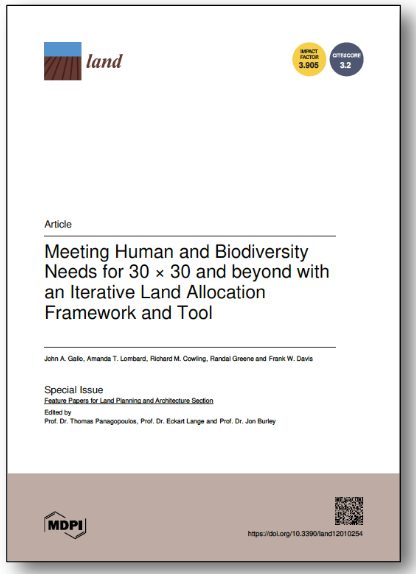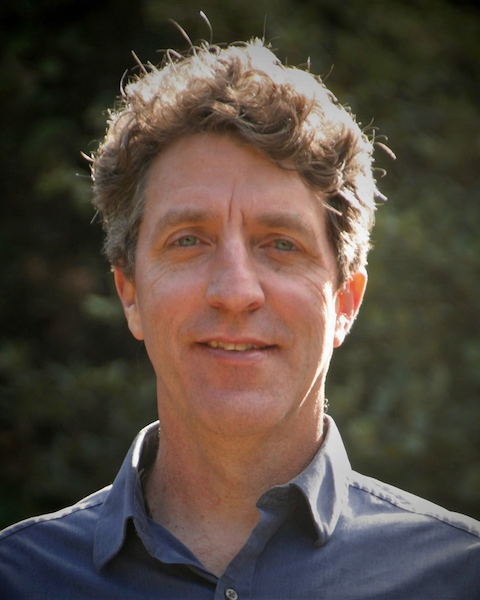Abstract: Spatial conservation prioritization does not necessarily lead to effective conservation plans,
and good plans do not necessarily lead to action. These “science-action” gaps are pernicious and need
to be narrowed, especially if the international goal of conserving 30% of the planet by 2030 is to be
realized. We present the Earthwise Framework, a flexible and customizable spatial decision support
system (SDSS) architecture and social process to address the challenges of these science-action gaps.
Utilizing case study experience from regions within California, South Africa, and British Columbia,
we outline the framework and provide the Little Karoo, South Africa SDSS data, code and results to
illustrate five design strategies of the framework. The first is to employ an “open science” strategy
for collaborative conservation planning and action. Another is that marginal value functions allow
for the continuous accounting of element (e.g., habitat) representation in prioritization algorithms,
allowing for an SDSS that is more automated and saves valuable time for stakeholders and scientists.
Thirdly, we program connectivity modeling integrated within the SDSS, with an algorithm that not
only automatically calculates all the least cost corridors of a region, but prioritizes among them and
removes the ones that do not make ecological sense. Fourth, we highlight innovations in multi-criteria
decision analysis that allow for both cost-efficient plan development, like representative solution
sets, but also land-use planning requirements, like site specific valuation, in what appears to be a
more transparent, understandable, and usable manner than traditional approaches. Finally, strategic
attention to communicating uncertainty is also advocated. The Earthwise Framework is an open
science endeavor that can be implemented via a variety of software tools and languages, has several
frontiers for further research and development, and shows promise in finding a better way to meet
the needs of both humans and biodiversity.
Meeting Human and Biodiversity Needs for 30 × 30 and beyond with an Iterative Land Allocation Framework and Tool


